The ponytail palm (Beaucarnea recurvata) is not just another houseplant; it’s a statement piece that brings a distinctive touch to any indoor or outdoor space. Known for its unique, water-storing trunk and long, curly leaves cascading like a ponytail, this plant is both charming and low-maintenance. Originating from the semi-deserts of Mexico, the ponytail palm thrives under conditions that would challenge many other plants, making it ideal for busy plant lovers. To equip you with all the necessary prerequisites, let’s explore How to Grow and Care for a Ponytail Palm successfully, ensuring it remains a vibrant part of your garden or home for years to come.
How to Grow and Care for a Ponytail Palm
Understanding the Ponytail Palm
The ponytail palm (Beaucarnea recurvata) is a fascinating plant, often mistaken for a true palm due to its name. However, it belongs to the Asparagaceae family and is more closely related to the yucca and agave. This plant is native to the semi-desert regions of southeastern Mexico, where it has adapted to survive in arid conditions. The most distinctive feature of the ponytail palm is its swollen trunk, which stores water, enabling it to withstand prolonged periods of drought. This trunk can grow quite large, providing a unique and striking appearance.

The long, curly leaves of the ponytail palm emerge from the top of the trunk, cascading down like a fountain. These leaves can grow up to 6 feet in length and are usually bright green, adding a lush, tropical feel to any setting. Ponytail palms can live for several decades and grow to impressive heights, especially when planted outdoors. Indoors, they tend to stay more compact, making them suitable for smaller spaces. Understanding these characteristics helps provide the proper care and environment, ensuring that your ponytail palm remains healthy and vibrant throughout its long life.
Soil Requirements for Ponytail Palms
The right soil mix is critical for maintaining a healthy ponytail palm, mainly to prevent water from sitting around the roots, which could cause root rot. A well-draining soil mix that follows the ponytail palm’s native desert soil is ideal. You can create an appropriate mix by blending two parts of a standard potting mix with one part of coarse sand or perlite. This combination ensures quick drainage after watering, which is crucial for plant health.

Additionally, ponytail palms benefit from slightly acidic to neutral pH levels in the soil. Occasionally, checking the pH and adjusting it with soil amendments can help maintain the ideal growing environment. It’s also beneficial to refresh the top layer of soil annually to remove salt build-up and replenish nutrients, ensuring your ponytail palm remains healthy and vibrant. This routine maintenance helps the plant focus its energy on new growth and leaf production.
How to Care for a Ponytail Palm
Caring for a ponytail palm is straightforward, making it a favorite among plant enthusiasts and beginners alike. The key to successful care lies in replicating the plant’s natural habitat. Ponytail palms thrive in bright, indirect light but can tolerate lower light conditions, making them versatile for different indoor environments. However, they grow best and maintain their vibrant foliage when placed near a sunny window or under a grow light.

Watering is another critical aspect of care. Due to their water-storing trunk, ponytail palms prefer to dry out completely between waterings. Overwatering can lead to root rot, so it’s essential to allow the soil to become thoroughly dry before watering again. During the growing season, typically spring through summer, water the plant every 2-3 weeks. In the dormant winter months, reduce watering to once a month.
Temperature and humidity are also critical. Ponytail palms prefer warmer temperatures, ideally between 60-80 degrees Fahrenheit, and can tolerate lower humidity levels, reflecting their desert origins. Fertilizing should be done sparingly; a balanced, liquid fertilizer diluted to half strength can be applied once in spring and again in mid-summer.
Indoor Care for Ponytail Palms
Growing a ponytail palm indoors allows you to display its distinct figure as part of your home decor. To ensure your indoor ponytail palm thrives, it is crucial to follow its natural habitat as closely as possible. Light is the most critical factor; these plants need bright, indirect sunlight. A north-facing window may not provide enough light, while direct sunlight from a south-facing window can scorch the leaves. East or west-facing windows are usually ideal. If you lack sufficient natural light, supplement with grow lights.

The choice of container is also vital. Opt for a pot with drainage holes to avoid water accumulation at the roots. While the ponytail palm’s water reserve allows it to withstand drought, proper drainage helps prevent root rot. The container should be heavy enough to support the top-heavy growth of the plant without tipping over. Additionally, while ponytail palms are not high feeders, applying a diluted, balanced fertilizer during the growing season can support their health and ensure their lush, green appearance.
Repotting and Pruning a Ponytail Palm
Repotting your ponytail palm is an essential aspect of its care, although infrequent due to its slow growth and minimal root system. It’s generally recommended to re-pot once every three to five years, preferably during the spring or early summer. This allows the plant to recover and grow in the new space during its active growth. When choosing a new pot, select one slightly larger than the current one. Ponytail palms prefer tight quarters, and pots that are too large can lead to excess soil moisture, increasing the risk of root rot.
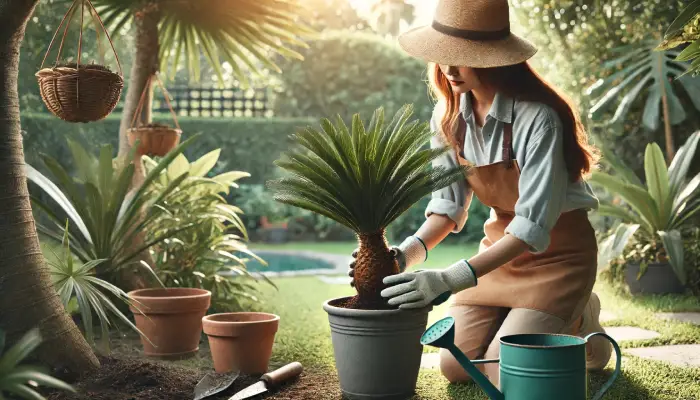
When repotting, gently remove the palm from its current container, shake off excess soil, and inspect the roots. Trim any rotten or excessively long roots to encourage healthier growth. Use a well-draining soil mix, as previously described, and ensure the plant is situated so that the base of its trunk is at the same level it was in the old pot to prevent burying the trunk, which can cause rot.
Pruning a ponytail palm is straightforward since it merely removes dead or dying leaves from the bottom of the crown. These leaves can be cut back to the trunk using clean, sharp scissors or pruning shears. Regular pruning helps the plant maintain energy and promotes healthier growth from the top.
Watering and Feeding Your Ponytail Palm
Ponytail palms require a balance in watering practices; they prefer to dry out between waterings. Overwatering is a common mistake, especially indoors, as it can lead to root rot due to the plant’s ability to store water in its trunk. In the growing season, water your ponytail palm when the top two inches of soil are dry, reducing frequency during winter when the plant’s growth slows.
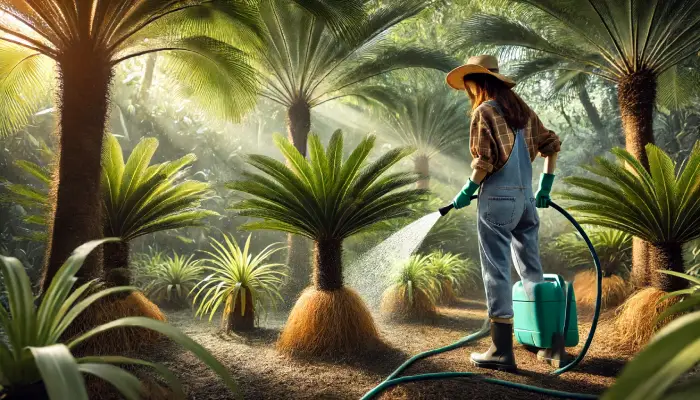
Feeding your ponytail palm should be done conservatively. During the spring and summer, feeding it with a balanced, liquid fertilizer every other month is sufficient. Avoid over-fertilizing, as this can lead to salt build-up in the soil, potentially harming the plant. Always dilute the fertilizer to half the recommended strength to avoid overwhelming the plant with nutrients, which can be as detrimental as neglect.
Common Diseases and Pests Affecting Ponytail Palms
While generally robust, ponytail palms can be susceptible to a few pests and diseases. Mealybugs and spider mites are the most common pests. These can be managed using neem oil or insecticidal soap, which is applied directly to the affected areas. Regular inspections of the leaves, especially the undersides, can help catch infestations early before they become severe.

Diseases are less common but can include root rot from overwatering. Ensuring proper soil drainage and watering practices are key preventive measures. If signs of rot appear, such as mushy, discolored leaves or a soft trunk, it may be necessary to remove the affected parts and repot the plant in fresh, sterile soil to prevent the disease from spreading further.
Troubleshooting Common Ponytail Palm Problems
Despite its hardy nature, the ponytail palm can experience a few common problems, particularly related to its environment. Brown tips on the leaves are often a sign of fluoride or mineral buildup in the water or from over-fertilization. Using distilled or non-fluoridated water can resolve this issue. If the leaf tips turn brown and crispy, it could also indicate low humidity, especially in a heated home during the winter. Providing a pebble tray with water beneath the plant’s container can help increase local humidity.

Drooping leaves may indicate overwatering or poor drainage. Ensure that your watering schedule is appropriate for the season—less frequent in winter—and that your pot and soil provide adequate drainage. Conversely, if the leaves begin to look thin and wilted, the plant might be underwatered or in need of a more nutrient-rich fertilizer to boost its growth.
Leaf spots or a sudden loss of leaves can be caused by a draft or a sudden temperature change. Ponytail palms prefer stability in their environment, so keeping them away from drafty windows or doors and managing consistent temperatures can prevent these issues.
Summary
Growing a ponytail palm is rewarding due to its prominent appearance and minimal care requirements. By understanding the basic needs of this unique plant—appropriate lighting, watering, and soil conditions—you can ensure its health and longevity. Ponytail palms are not only beautiful and exciting but also robust and adaptable, making them perfect for both new plant owners and experienced gardeners looking to add a little flair to their collection. With just a bit of care and attention, your ponytail palm can thrive and bring a piece of the desert’s beauty into your home or garden for many years.
FAQ
Q1: Do ponytail palms need sunlight?
- Yes, ponytail palms need sunlight to thrive. They prefer bright, indirect light but can adapt to lower light conditions. Ideally, place your ponytail palm near a south or east-facing window where it can receive ample sunlight without being directly exposed to harsh rays. Insufficient light can slow down its growth and affect the health of its leaves.
Q2: How often should I water a ponytail palm?
- Ponytail palms should be watered sparingly. Allow the soil to dry out completely between waterings. During the growing season (spring and summer), water every 2-3 weeks. In the winter, when the plant’s growth slows down, reduce watering to once a month or even less. Overwatering can lead to root rot, so it’s crucial to let the soil dry out fully.
Q3: How do you make ponytail palms grow faster?
- To encourage faster growth in ponytail palms, ensure they receive adequate light, preferably bright, indirect sunlight. Use well-draining soil and avoid overwatering. During the growing season, you can feed the plant with a balanced, liquid fertilizer diluted to half strength every other month. Maintaining a warm temperature and proper humidity levels will also support healthier and faster growth.
Q4: What are common problems with ponytail palms?
- Common problems with ponytail palms include brown leaf tips, which can result from over-fertilization or using water with high fluoride or chlorine levels. Drooping leaves are often a sign of overwatering or poor drainage. Pests like mealybugs and spider mites can infest the leaves, but they can be controlled with neem oil or insecticidal soap. Root rot is another issue, typically caused by excessive watering or poor soil drainage.
Q5: What is the best fertilizer for ponytail palm?
- The best fertilizer for a ponytail palm is a balanced, liquid fertilizer applied at half strength. Feed the plant every other month during the growing season, which is from spring to summer. Avoid over-fertilizing, as this can lead to salt build-up in the soil, causing brown tips on the leaves and potentially harming the plant. A slow-release fertilizer can also be effective, providing nutrients over a more extended period without the risk of overfeeding.


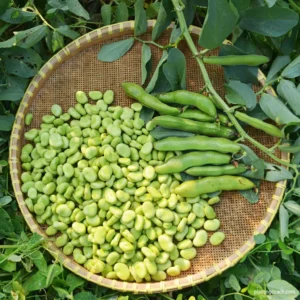
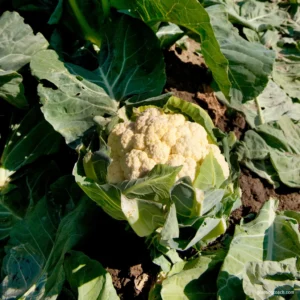
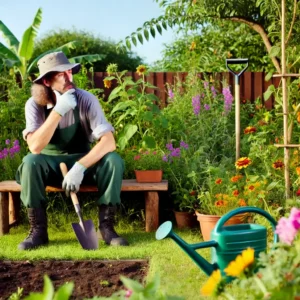

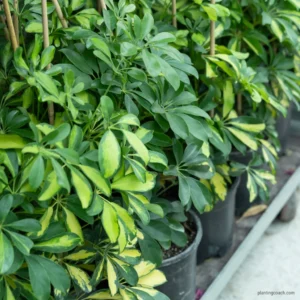

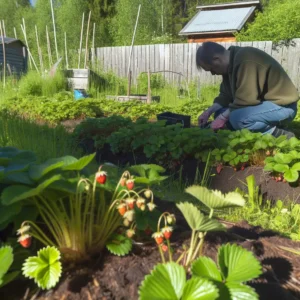
Unquestionably believe that which you stated. Your favourite justification seemed to be at the web the simplest factor to remember of. I say to you, I certainly get annoyed at the same time as folks consider concerns that they just do not realize about. You controlled to hit the nail upon the highest and also defined out the entire thing with no need side effect , people could take a signal. Will probably be again to get more. Thank you